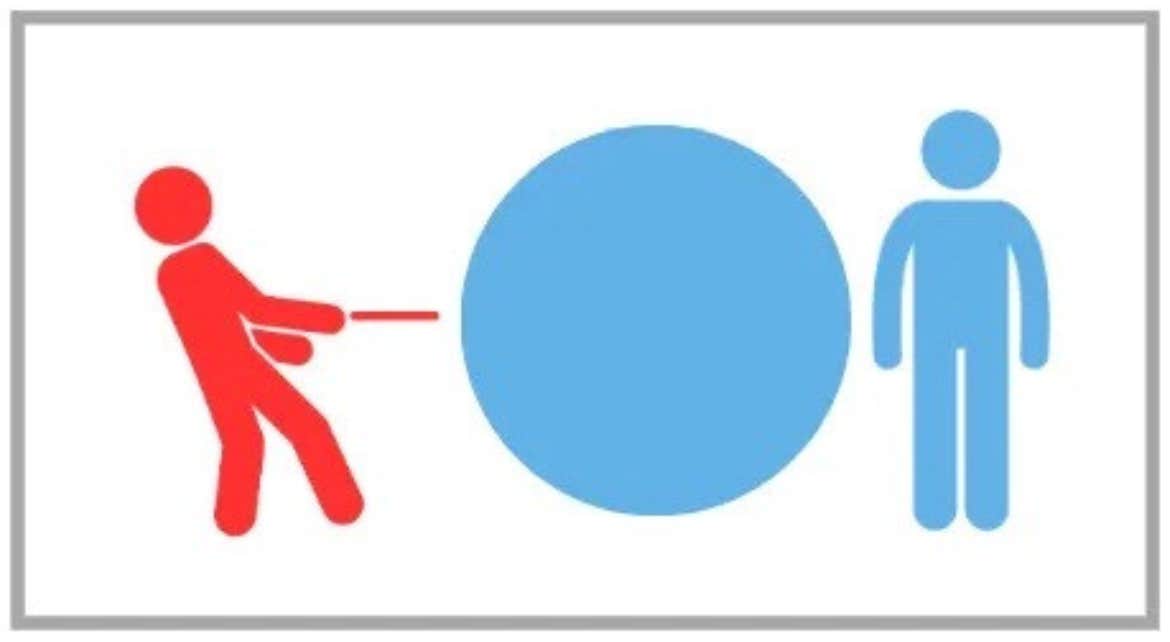Use This Simple Intimacy Concept To Attract People To You
Think of it less as an interview and more as a dance where you are trying to move together in perfect rhythm.
 Sergey Nivens, Maria Kray, Monica Olteanu's Images, aiinue, Seiya Tabuchi | Canva
Sergey Nivens, Maria Kray, Monica Olteanu's Images, aiinue, Seiya Tabuchi | Canva I’m going to ask you to play a game of human observation with me. I’m going to describe two people to you, and you are going to guess which one has a harder time developing romantic relationships. Ready?
Meet person 1 — Cooper is athletic and confident. He holds a degree from Harvard, is extremely well-traveled, is a published author, a motivational speaker, and is now the CEO of a promising startup. At the age of 43, he is a multimillionaire and counts amongst his close friends well-known public figures and celebrities.
Meet person 2 — Simon is a soft-spoken 29-year-old who recently quit his 9–5 job as a data analyst to branch out as a freelancer. As an introvert, he spends most of his time reading and spending time with a small circle of close friends. Simon doesn’t regard himself as especially athletic but generally lives a healthy lifestyle.
Now we all know which person would have more luck on Tinder but what about real life? Which of these two people do you think actually has more success forming intimate relationships?
You’re probably smart enough to figure out that I set you up to answer that Cooper was likely more romantically successful but that the real answer is actually Simon. And you would be right.
You see, Cooper is a very successful individual, but intimacy is really a dance between two people. Simon, on the other hand, understands this. What is it that they do differently? Cooper employs what I call the "Pushing" method of communication while Simon employs the "Pulling" method.
The Pushing Method
The first time I met Cooper, it felt like I was listening to a complete recital of his resume within the first five minutes. I knew exactly what his career highlights were, how much money he had made on his recent book, and which famous public figures had endorsed it. It felt rehearsed, even the seemingly humorous parts. Almost all of the conversation was about what Cooper had achieved instead of who he was as a person.
Every time I shared something about myself, Cooper would respond with a trite remark like, "That’s awesome!" — followed by another story about himself. He asked no follow-up questions, and his comments weren’t usually a response to what I said but more to make the point that he had done that, too.
Cooper professed that being a father was extremely important to him. However, when he spoke about his daughters, he similarly highlighted their achievements. Lila recently won an event at the state track meet and Diana was shortlisted for a prestigious science award. He doesn’t talk about how much he enjoys spending time with them or what makes them happy.
His entire conversation highlighted how much importance he placed on achievement. Yet, he was turned off when the women that he drew to him had similar priorities.
Cooper had come to me after he had tried professional matchmakers, online dating, and singles events. He attributed his lack of success to his busy schedule and the lack of chemistry. And since he did not have problems getting dates, he didn’t think the problem was him.
But I knew exactly what all the women who had been on dates with Cooper must have been feeling. The truth is, Cooper didn’t really allow space for another person in his interactions. It was all about Cooper, and it was very alienating.

Graphic created by author
When you (red) employ the pushing method, the space between the two people is filled only with you. There is no room for the other person.
The Pulling Method
Let’s contrast that to Simon. I met Cooper and Simon in the same week and gave the same response to, "How are you?" which was, "I’ve been thinking about my purpose a lot lately."
Cooper nodded distractedly and said, "I’ve had multiple purposes! Let me tell you about the time…"
Simon, on the other hand, immediately picked up on my existentialist dilemma and opened the door to exploring my past, my fears, and my core values in life. He then shared a period when he had felt the same and the tools that he had discovered to move beyond it.
Unlike Cooper, Simon creates bonds slowly and he works very hard at maintaining a select few. So, instead of perfecting a flashy introduction that will leave an impression, he stays curious and is practiced at how to build and maintain a relationship.
I started noticing that the conversation was filled with my opinions and feelings, and I found myself deep in thought as he asked question after question. I was surprised at how much I had learned about myself during the conversation.
It wasn’t that Simon didn’t talk about himself. It was that what he shared was relevant and a direct response to something that I said or asked as opposed to a pre-rehearsed script.
As a result, the conversation felt like a wonderful dance between two people. It was filled with laughter, emotion, insight, and resonance.
As you might guess, Simon doesn’t necessarily get as many dates as Cooper but what he does have are strongly intimate relationships — both with partners as well as friends.

Graphic created by author
When you (red) employ the pulling method, the space between the two people is filled mostly with them.
Why pulling instead of pushing is so important
One of the most fascinating things about writing is that you get to see what people highlight in your articles. After a million-plus views, this is the most highlighted line across all my articles:
"There is nothing more beautiful in this world than to be fully accepted for everything that you are."
Here’s the thing, for people to feel fully accepted for who they are, they must first feel seen for who they are. When you "push" your stories, your experiences, and your feelings into that space, you are guaranteeing that they will not feel seen or heard.
On the other hand, when you "pull" their feelings, opinions, and experiences into the space, you are ultimately making that person feel heard and valued for their unique and authentic self. If you then respond without judgment and by validating them, you will have created a feeling of intimacy. The formula is simple:
Container + Vulnerability + Validation = Intimacy
In Cooper’s case, he fails at step one. By filling the container with himself, there is no space for the other person to express themselves or allow vulnerability.
Ironically, pushing also has the double whammy of making the person who is pushing seem insecure. People who list their achievements are really saying, "I need you to validate me."
Think back on your recent dates and romantic interactions. Which category do you fit in? Not sure? Here’s how you can tell.
Here are 6 signs of pushing:
Since Cooper was so successful in his career endeavors, he had a hard time grasping that how you create a positive outcome in an intimate setting is very different from how you do it in a professional setting. In short, he didn’t know what "Pushing" looked like. So, here are some examples.
1. Highlighting accomplishments
This includes letting people know how much money you make or have made, how high ranking you are at work, the famous people you know or have met, the number of countries you’ve been to (as opposed to specific travel experiences or how much you enjoyed it), the awards you’ve won, etc.
2. Repeating pre-rehearsed stories
Have you been on several dates lately and found yourself telling the exact same story several times? If yes, it might mean that you are always waiting for your turn to speak instead of responding specifically to what that person is saying.
3. Dominating the conversation
People who push tend to be the ones speaking more than 50 percent of the time. They have so many stories to tell about themselves that they may not even realize that the other person is bored or offended. They also tend to be uncomfortable with pauses and immediately fill it in with stories about themself.
4. Sharing other peoples’ opinions of you
Examples of this include, "My clients just love me," "They couldn’t live without me," and "They begged me to come back." Really, there is never any reason to share this unless it relates directly to a question being asked.
5. Stating your expectations, desires, and needs a lot
The next time you are in a conversation, take note of how often you say the word "I" and how often you initiate a sentence with "I need," "I deserve,” or "I want."
6. Providing unsolicited solutions
Another common sign of "pushing" is to tell people what they should do as opposed to simply listening to them. If you find yourself constantly trying to solve people’s problems but are not receiving gratitude in response, you are probably "pushing."
If you recognize yourself in these examples, don’t worry — there is a simple fix. Here is how you can "Pull" more.
Here are 5 ways you can pull to create intimacy:
Pulling is a subtle art. It requires you to be genuinely curious about the other person and to be fully present.
1. Listening for threads
People will often reveal what they currently care about very quickly. Typically, it’s something they are worried about or stressed about that day. Some threads are more subtle than others. Your job is to notice it. Simon identified right away that I was struggling with finding purpose and followed up on the thread.
2. Validating emotions
Remember that people care about their feelings far more than they care about an event. Validating emotions sounds like this, "It makes sense that you would feel that way," "That sounds stressful," and "I’m sorry you had to go through that."
3. Asking feeling-based follow-up questions
Once you’ve identified a thread, it’s important to ask a feeling-based follow-up question. It is better if that question can be preceded by an observation that shows that you have been listening.
For example, if someone reveals that they are thinking about quitting their job, you could say, "It sounds like your job is really important to you (observation), why do you think you want to quit? (feeling-based question)" as opposed to "How long have you worked there? (fact-based question)."
4. Holding a mirror
This is where you help that person see themselves in a different light. For example, if someone quit their job to pursue a side hustle full time and is feeling insecure about their decision, you could help them see how they are an incredibly courageous person.
5. Giving genuine praise versus casual flattery
Casual flattery sounds like this, "That’s cool that you like traveling!", authentic validation sounds like this, "I think it’s cool that you were so willing to try the local food and really learn the culture."
If you are reading this and thinking, "Are you suggesting that I just never talk about myself?"
That’s not what I am saying at all. After all, intimacy is still always created between two people.
How to meaningfully share yourself
Meaningfully sharing yourself involves responding specifically to something that the person is saying or asking as opposed to wanting to make sure that you tell a certain story. It is crafting a dynamic that is tailored to that person based on the thoughts, feelings, and experiences that they are sharing with you that day.
Think of it less as an interview where you are trying to make an impression and more as a dance where you are trying to move together in perfect rhythm.
This is actually easier than you think. An easy guiding principle is to attempt to share your own feelings and internal experiences as opposed to your actions and achievements. It’s also helpful to respond to the nuances or details of what they are saying.

llustration created by author
I’ve been friends with Simon for five years now and have since had the privilege of meeting some of his friends.
Here’s how one friend describes how Simon makes him feel: "Simon helps me see things about myself that I never would have realized on my own. When I see myself through Simon’s eyes, I like the person I see. No one understands and accepts me the way Simon does."
When I shared this with Simon, he told me that before he spends time with someone, he would often ask himself, "How do I want this person to feel after spending time with me?"
That question naturally shifts the focus from Simon to the other person. So, the next time you want to practice "pulling" instead of "pushing," try asking yourself that question and you will naturally start to "pull."
"I’ve learned that people will forget what you said, people will forget what you did, but people will never forget how you made them feel." — Maya Angelou
May Pang is a Vice President of a Fortune 500 company and also a connection/communication coach. She is a top writer on Medium who aims to help people connect better with others and themselves. Her writing is a unique combination of storytelling and science.

